I had originally posted this in the repairs section thinking I’d just plug the holes in the butt of the grip, or maybe not, and now that I have the pistol in hand, I won’t.
Presumably this late 1930s pistol was used in competition shooting. But why the two holes in the grip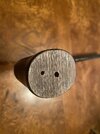
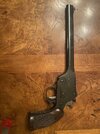
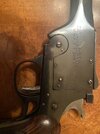
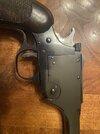
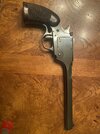
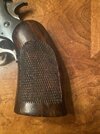
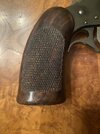
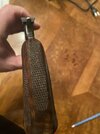
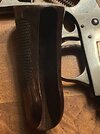
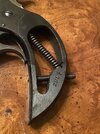 and, even more puzzling, why was a paper thin section cut off the base of the butt with a bandsaw?
and, even more puzzling, why was a paper thin section cut off the base of the butt with a bandsaw?
Presumably this late 1930s pistol was used in competition shooting. But why the two holes in the grip









 and, even more puzzling, why was a paper thin section cut off the base of the butt with a bandsaw?
and, even more puzzling, why was a paper thin section cut off the base of the butt with a bandsaw?

